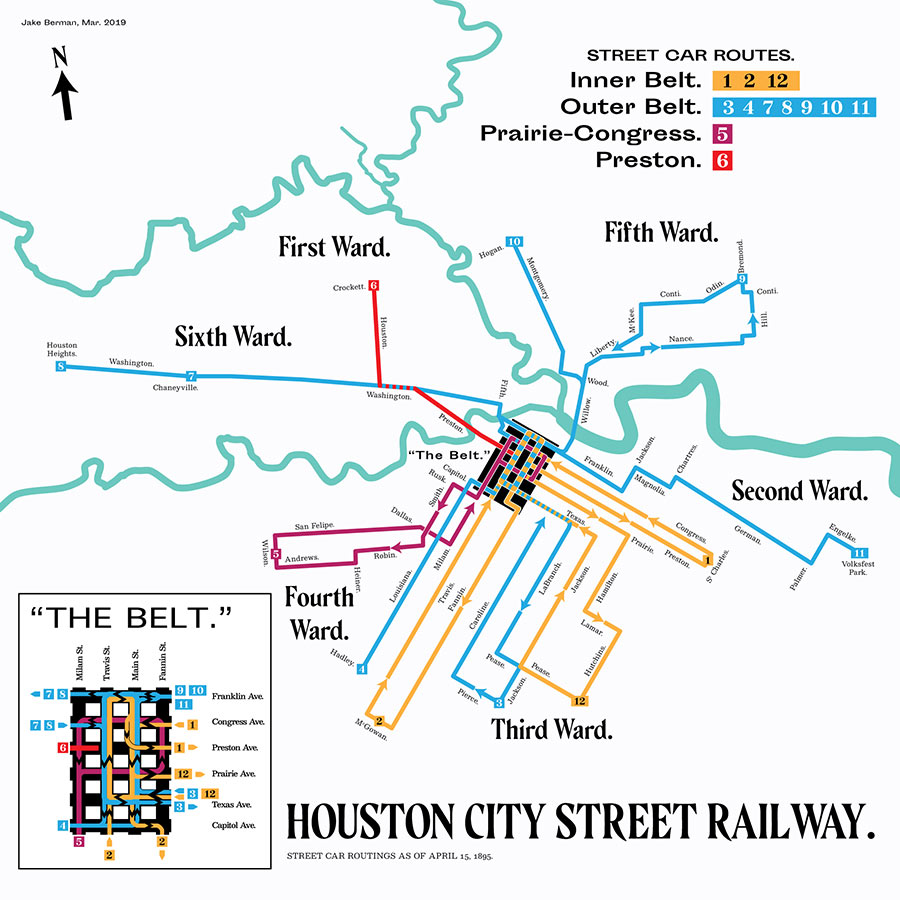COMMENT OF THE DAY: A BRIEF ANNOTATED HISTORY OF ALLEN PARKWAY VILLAGE’S DIRTY NEIGHBOR  “Wow, I never knew there was a waste incinerator right in the Fourth Ward. Here’s a handy timeline:
Post-Civil War: Freed slaves construct their own neighborhood in the Fourth Ward.
1917: Camp Logan Race Riots are sparked off when a Houston policeman beats a black soldier in the Fourth Ward.
1920s: Gillette incinerator is built (PDF) right in the Fourth Ward.
1944: San Felipe Courts (today’s Allen Parkway Village) were built next to the incinerator. They were originally intended as public housing for the city (following a New Deal movement for public housing in the 1930s) but ended up being handed over to the defense department to exclusively house white WW2 veterans (PDF). The other motivation was to ‘clean up the slums’ along Allen Parkway for passing commuters.
1964: San Felipe Courts are desegregated following the Civil Rights Act and renamed to Allen Parkway Village.
1970s-90s: Developers advocated for APV’s demolition arguing that the public housing’s costs didn’t reflect the land’s ‘highest and best use.’ Meanwhile, the housing deteriorated due to neglect by the Houston Housing Authority and HUD. Residents organized and protested demolition leading to APV’s rebuilding in 1997.
Today: The city can now cash in by selling a plot of polluted land next to APV now that the Fourth Ward is gentrifying.” [Carpetbagger, commenting on The Best the City Can Get for Gillette; Not Jus Donuts’ Extreme Cakeover] Illustration: Lulu
“Wow, I never knew there was a waste incinerator right in the Fourth Ward. Here’s a handy timeline:
Post-Civil War: Freed slaves construct their own neighborhood in the Fourth Ward.
1917: Camp Logan Race Riots are sparked off when a Houston policeman beats a black soldier in the Fourth Ward.
1920s: Gillette incinerator is built (PDF) right in the Fourth Ward.
1944: San Felipe Courts (today’s Allen Parkway Village) were built next to the incinerator. They were originally intended as public housing for the city (following a New Deal movement for public housing in the 1930s) but ended up being handed over to the defense department to exclusively house white WW2 veterans (PDF). The other motivation was to ‘clean up the slums’ along Allen Parkway for passing commuters.
1964: San Felipe Courts are desegregated following the Civil Rights Act and renamed to Allen Parkway Village.
1970s-90s: Developers advocated for APV’s demolition arguing that the public housing’s costs didn’t reflect the land’s ‘highest and best use.’ Meanwhile, the housing deteriorated due to neglect by the Houston Housing Authority and HUD. Residents organized and protested demolition leading to APV’s rebuilding in 1997.
Today: The city can now cash in by selling a plot of polluted land next to APV now that the Fourth Ward is gentrifying.” [Carpetbagger, commenting on The Best the City Can Get for Gillette; Not Jus Donuts’ Extreme Cakeover] Illustration: Lulu





And, the COH should sell off all of it to the highest bidder while the market is hot. It would surely bring $100Mplus. It is a disservice to the taxpayers to use such valuable land for subsidized housing. There are thousands of acres in this city that costs a fraction of what this land is worth per acre that could be acquired for subsidized housing. End this nonsense now.
@Jon, so what you’re saying is that poor people don’t have the right to live near jobs and public transportation when rich people have the opportunity to get richer by selling that land? I disagree. I think the “Highest and best use” of the APV land is, in fact, subsidized or other affordable housing.
@nearnort.
What rich people would be selling the land? The City of Houston owns it. And It isn’t as though the only jobs and buses are Downtown.
Nearnort: they could sell this and provide low income housing to 5x the people by going to bit east. So in that regard, it’s the best for that goal as well.
@Nearnort, Poor people have the right to live anywhere they want – if they can afford it. As long as they are living off the taxpayer, they don’t have a “right” to live in what has become some of the most expensive areas of town. I lived in Montrose/Upper Kirby for more than 20 years before being priced out, and moving to the Washington Corridor. Why should I and other taxpayers pay to subsidize homes in a neighborhood that we can’t even afford? Thousands of Houstonians are moving from the Westside of downtown to the East, North, and South, all because it’s more affordable. It’s time to move this subsided housing to more affordable (to the taxpayers who are footing the bill) parts of town too. The money the COH could make from selling this underused land is sorely needed, and selling it is the right thing to do, especially when the market is this hot.
It’s tempting to move all of the poor people far away, but history shows that’s a losing strategy. Cities need poor people. They need their labor. If you move them far away and don’t provide transportation the it will drive up the price of everything that relied on their labor.